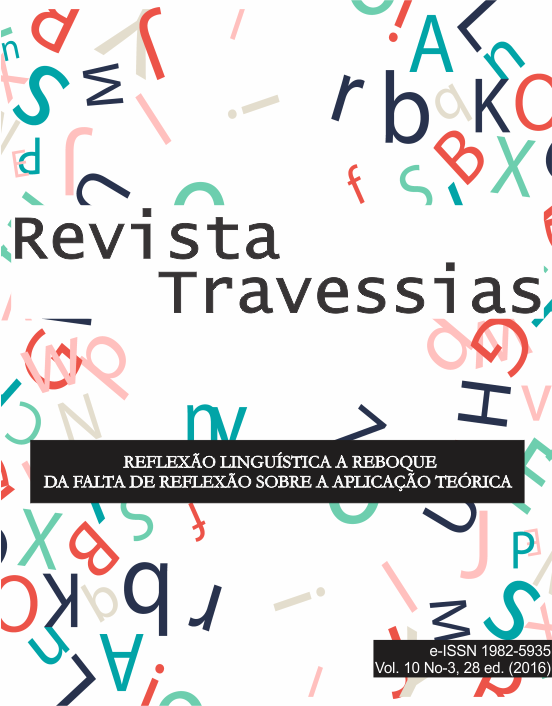Children’s literature and education: storytell and forming readers
Keywords:
Children’s literature, education, storytelling, reading.Abstract
The present text has as its aim to highlight the importance of the Children’s literature in the child education forming readers. It shows, at first, a brief historic to the relation between the children’s literature and the children’s education, next it talks about the reading and forming child readers, at last highlight the importance of the storytelling in the formation of new readers. Bibliographic study with the main authors about this theme such as Regina Zilberman, Betty Coelho, Fanny Abramovich, Nelly Novaes Coelho, among others was done. Before the children learn how to read they listen to stories, told by their grandparents, parents and other people. Those moments give them pleasure, emotion, suspense, joy, among many other feelings. Since the begging the cave men told stories through the art drawing in the caves and around the fire. The Children’s literature as it is known appeared in the XVIII century, with the “appearing” of the childhood. Besides, It was in the same century that a significant development of the industry happened, facilitating the mass production, the distribution and consumption. Nowadays, we can see a kind of neglect of the storybook and a tendency for the TV images, because they are easier and done. It is necessary change it back. That is why, it is crucial the storytelling, in order to involve the children in a way they get closer to the books and the reading, to allow them to understand the reality they live and became a critic person. The teacher needs encouraging his/her students to read, although it is also a part of the work of the family and the State.
Downloads
References
ABRAMOVICH, Fanny. Literatura Infantil: gostosuras e bobices. São Paulo: Scipione, 1997.
AGUIAR, V. T. de. Leituras para o 1º grau: critérios de seleção e sugestões. In: ZILBERMAN, R. (org.) Leitura em crise na escola: as alternativas do professor. 6 ed. Porto Alegre: Mercado Aberto, 1986.
COELHO, Nelly Novaes. Literatura infantil: teoria, análise, didática. São Paulo: Moderna, 2000.
GIORDANO, Alessandra. Contar histórias: um recurso arteterapêutico de transformação e cura. São Paulo: Artes Médicas, 2007.
MACHADO, Ana Maria. Texturas: sobre leituras e escritos. Rio de Janeiro: Nova Fronteira, 2001.
RIBEIRO, Jonas. Ouvidos dourados: arte de ouvir histórias para depois contá-las. São Paulo: Ave Maria, 1999.
ROUSSEAU, Jean-Jacques. Emílio ou da educação. São Paulo: Difusão Europeia do Livro, 1968.
SISTO, Celso. Textos e pretextos sobre a arte de contar histórias. Rio de Janeiro: Proler, 1994.
ZILBERMAN, Regina. A literatura infantil na escola. São Paulo: Global, 1994.
ZILBERMAN, Regina; MAGALHÃES, Ligia Cadermatori. Literatura infantil: autoritarismo e emancipação. São Paulo: Ática, 1984.
Downloads
Published
How to Cite
Issue
Section
License
Creative Copyright Notice
Policy for Free Access Journals
Authors who publish in this journal agree to the following terms:
1. Authors keep the copyright and grant the journal the right of first publication, with the work simultaneously licensed under the Creative Commons Attribution License, which allows sharing the trial with acknowledgment of authorship and initial publication in this journal.
2. Authors are authorized to take additional contracts separately, for non-exclusive distribution of the work version, published in this journal (eg publish in institutional repository or as a book chapter), with acknowledgment of authorship and initial publication in this journal.
3. Authors are allowed and encouraged to publish and distribute their work online (eg in institutional repositories or on their personal page) at any point before or during the editorial process, as this can generate productive changes, as well as increase both impact and citation of the published trial (See The Effect of Free Access).
Creative Commons License
This work is licensed under a Creative Commons Attribution–NonCommercial-shareaswell 4.0 International License, which allows you to share, copy, distribute, display, reproduce, completely or part of the work, since there is no commercial purpose, and authors and source are cited.



